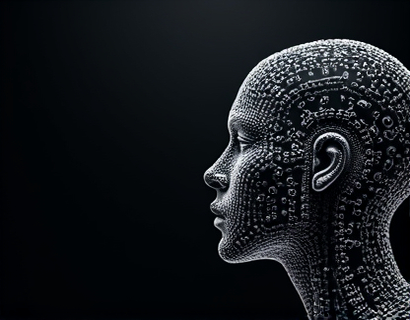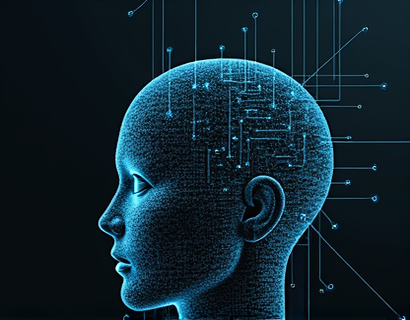Transforming Healthcare Access through AI-Powered Chat Interfaces
The integration of artificial intelligence in healthcare has opened new avenues for patient engagement and information dissemination. One of the most promising developments in this domain is the AI-powered healthcare chat interface, designed to provide users with specialized clinic information and industry insights across all age groups. This innovative approach not only enhances accessibility but also ensures that the content provided is verified and safe for consumption, making it an invaluable resource for healthcare consumers, families, students, educators, healthcare professionals, and tech-savvy individuals alike.
Understanding AI-Powered Healthcare Chat Interfaces
AI-powered healthcare chat interfaces leverage natural language processing and machine learning algorithms to understand and respond to user queries with precision and accuracy. These chatbots are programmed to provide detailed information about clinic services, treatment options, and general healthcare knowledge. The primary goal is to create an interactive platform where users can seek answers to their health-related questions in real-time, thereby empowering them to make informed decisions about their well-being.
Verified Content for Enhanced Trust
One of the critical features of these AI chat interfaces is the emphasis on content verification. In the realm of healthcare, accuracy and reliability are paramount. To address this, the platform employs a rigorous content validation process, ensuring that all information provided is up-to-date, accurate, and sourced from credible medical databases and publications. This commitment to verified content builds trust among users, making the platform a go-to resource for health information.
Personalized Healthcare Guidance
The AI chat interface is designed to offer personalized healthcare guidance tailored to individual needs. Users can input their symptoms, medical history, and concerns, and the chatbot will provide relevant advice and recommendations. For instance, a user seeking information about managing chronic conditions can receive step-by-step guidance, including lifestyle modifications, medication management, and when to seek professional help. This personalized approach ensures that users receive information that is directly applicable to their unique situations.
Child-Friendly Options for Educational Interactions
Recognizing the importance of health literacy from a young age, the AI chat interface includes a child-friendly version. This version is specifically designed to engage children and students with interactive and educational content. The chatbot uses simple language, engaging visuals, and age-appropriate examples to explain complex medical concepts. For example, a child asking about the function of the heart might receive a detailed but simplified explanation, accompanied by illustrations, to enhance understanding.
Promoting Health Education for All Ages
The child-friendly version of the chat interface serves as an educational tool for parents and guardians as well. It provides them with the knowledge to better support their children's health and understand the medical terms and concepts their kids are learning. This dual approach ensures that both children and their caregivers are well-informed, fostering a culture of health awareness and proactive care.
Broadening Access for Diverse User Groups
The AI-powered healthcare chat interface is designed to cater to a wide range of users, each with distinct needs and preferences. For healthcare consumers, it offers insights into clinic services, appointment scheduling, and health management tips. Families can access comprehensive resources on child health, nutrition, and preventive care. Students and educators find valuable information on health education, curriculum integration, and patient education strategies. Healthcare professionals can stay updated on the latest industry trends, research findings, and best practices. Tech-savvy individuals appreciate the innovative use of AI in healthcare, while those seeking child-friendly content can explore safe and educational interactions.
Enhancing Clinic Services through AI Integration
The integration of AI chat interfaces in clinics and healthcare settings revolutionizes the way services are delivered. Patients can interact with the chatbot to get immediate answers to their queries, reducing the burden on healthcare staff and improving patient satisfaction. For instance, a patient can use the chat interface to confirm appointment details, ask about medication side effects, or get guidance on post-operative care. This not only streamlines the patient experience but also ensures that critical information is readily available 24/7.
Ensuring Safety and Privacy
While the benefits of AI-powered healthcare chat interfaces are numerous, ensuring user safety and privacy remains a top priority. The platform adheres to strict data protection standards, complying with regulations such as HIPAA in the United States. User data is encrypted, and access is restricted to authorized personnel only. Additionally, the chat interface is designed to handle sensitive health information with the utmost care, providing users with peace of mind when seeking health-related advice.
Building a Community of Health Advocates
The AI chat interface fosters a community where users can share experiences, ask questions, and support one another. Forums and discussion boards integrated into the platform allow users to connect with others facing similar health challenges. This community aspect not only provides emotional support but also creates a network of individuals who can share verified information and resources, further enhancing the overall health literacy of the community.
Future Prospects and Innovations
The future of AI-powered healthcare chat interfaces holds immense potential for further innovations. As technology advances, these chatbots can incorporate more sophisticated features such as emotional intelligence, enabling them to understand and respond to users' emotional states. Integration with wearable devices and health monitoring systems can provide real-time health data, allowing the chatbot to offer more personalized and timely advice. Additionally, the development of multilingual capabilities will make these resources accessible to a global audience, breaking down language barriers and expanding the reach of healthcare information.
Conclusion
The AI-powered healthcare chat interface represents a significant leap forward in healthcare accessibility and education. By providing verified, personalized, and engaging content, it empowers users of all ages to take control of their health. The inclusion of child-friendly options ensures that health education begins at a young age, fostering a generation of health-conscious individuals. As this technology continues to evolve, it promises to transform the healthcare landscape, making high-quality information and support readily available to everyone.










































